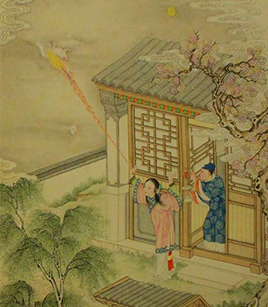Liaozhai stories

FILE PHOTO: A Qing Dynasty illustration of Liaozhai Zhiyi
Liaozhai Zhiyi (hereinafter called Liaozhai), or Strange Tales from a Chinese Studio, is a collection of nearly 500 unusual and supernatural tales written by Pu Songling (1640–1715), a Qing Dynasty writer.
The Liaozhai tales can be categorized into two groups: love stories and allegories. The former generally praise human compassion and pure love, while the latter expose the ugly and evil side of society at that time.
Supernatural tales have been one of the major genres of classical Chinese literature, and love between humans and ghosts is a recurrent theme. “Nie Xiaoqian,” a story in Liaozhai, has touched many hearts over the centuries and has been adapted into numerous films and TV series, among which the 1987 film “A Chinese Ghost Story” may be the most renowned one. The story is set against an eerie world of the dead. Nie Xiaoqian is a beautiful female ghost. She is coerced by the devil of the netherworld to prey on humans. After falling in love with Ning Caichen, a truthful, good-natured man, she is determined to save him from the evil force, even at the cost of her own afterlife.
There is a number of female ghosts and fox fairies in the Liaozhai stories. They possess intelligence and a fairylike demeanor. They are beautiful and courageous in pursuit of true love, a symbol of women breaking the fetters placed on them by feudal society.
Chinese allegorical literature originated in pre-Qin (before 221 BCE) fables. In Liaozhai, works of this type are mostly satirical allegories and criticism of malpractices in feudal government and society. A good example of such satire is “The Cricket.” In real life, Emperor Xuanzong of Ming (r. 1425–1435) loved watching cricket fighting. This story goes that Emperor Xuanzong issued an imperial edict ordering all his subjects to collect fine crickets and send them to him. Cheng Ming captured a champion cricket, but it was accidentally killed by his son. The boy was then transformed into a sturdy fighting cricket, and was presented to the emperor, thus allowing the family to escape punishment. This is a bitter satire of the brutality of feudal rulers.
Edited by REN GUANHONG
